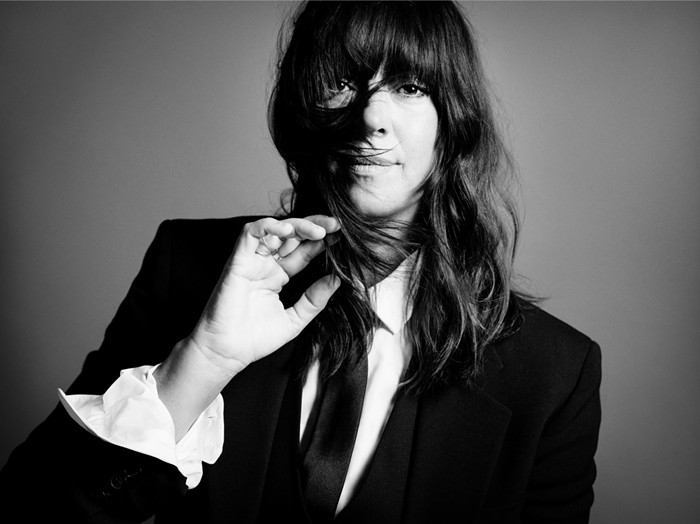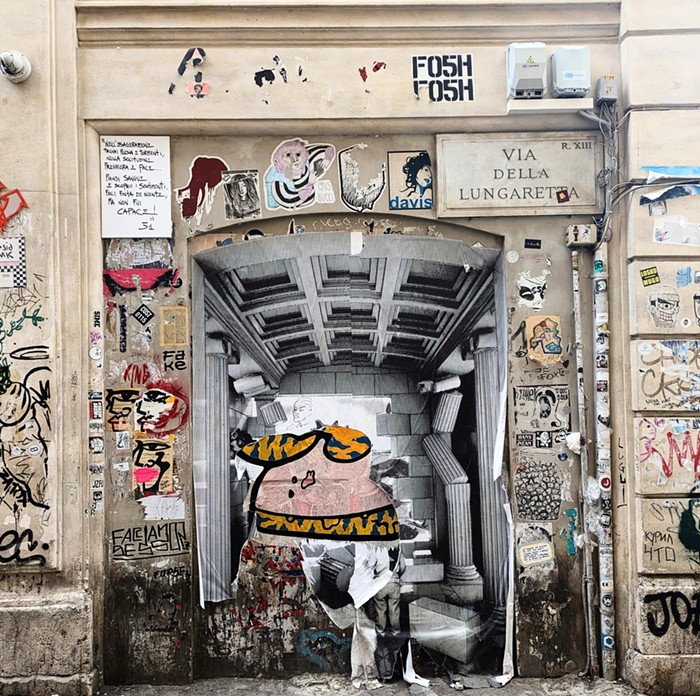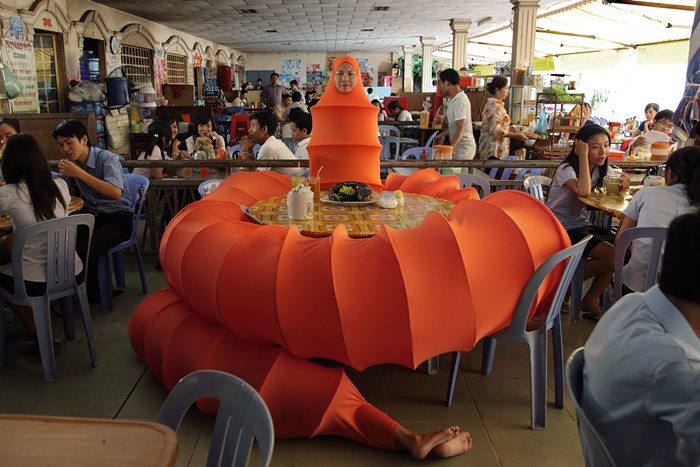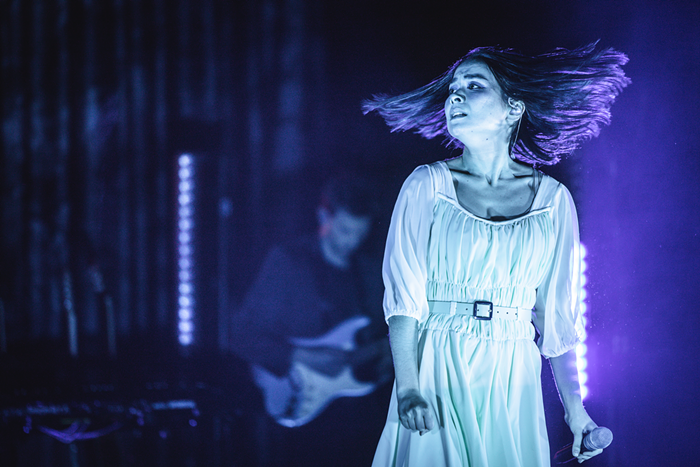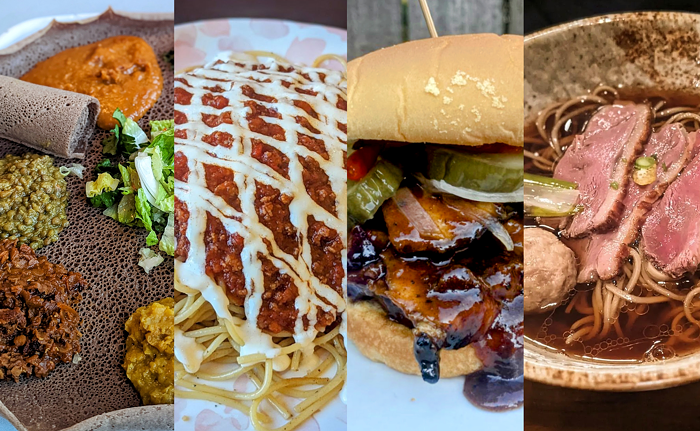Jeanne Dunning's work would be very messy indeed without the intercession of photography. Her art tends to involve coating women's bodies with oozy pudding, whipped cream, or frosting, and photographing the results. Sometimes in her work, there's an obvious equation: A nude woman with a pile of whipped cream and a cherry on her crotch is a double dessert, right? But her main piece here is less direct, richer. The Edible 1 is first in a series of photos of pudding poured over a reclining nude, obscuring details so that you're not sure what part of the model you're looking at. Now, there are food fetishists who get off on this sort of thing, but there's little pornography in Dunning's images. The pudding is pale in color: It may be vanilla, but it's lit so that it nearly approximates the model's skin tone. It's poured in curving trails that overlap each other, creating a broad field of wavy forms: an ocean, sand dunes, a large intestine--it could be any of these. The image suggests links between nudes and landscapes, between inside and outside, between growth and decay.
Dunning's images tend to be disturbingly inscrutable from a distance and much clearer (though with a pleasing failure to completely resolve) from close up. This is used well in her other photo here, Untitled Hole, a close-up of a curled-up finger that looks like a bodily orifice when your eye first grazes it. Dunning's carefully lit, cunningly framed images excite wild speculation while retaining their innocence. Nothing here but a finger, the photo says, what kind of a sick fuck are you?
A Dunning video showing in the gallery brings in a decorative theme, central to any work relating to dessert. In Icing, the hand of an otherwise unseen person carefully covers a woman's entire head with cake icing. The woman is seated with a doily around her neck, which looks like both an elaborate Dutch lace collar and the top of a cake plate. As the frosting-spatula-wielding hand slowly does its work, moving back and forth to make an almost faceted surface, the woman's head becomes a purely sculptural form, her features disappearing under the repetitive ornamentation.
Martha Benzing is represented by a few 2-D works that look like paintings, but are really closer to collage or assemblage. Her media are M&Ms, pigment, Kool-Aid, Milky Way chocolate bars, and resin. Her processes are mysterious, but she uses a solvent to lift the pigment off the M&Ms as they sit on the painting's support, leaving a reversed letter "M" and a small circle of color. As the rest of the image is primarily purple and brown, I believe she depends largely on grape and possibly fruit-punch-flavored Kool-Aid, along with melted Milky Ways, to paint the rest of the image, which ends up looking like a night sky, with dark clouds, colored stars, a suggestion of the Milky Way galaxy. The resin is poured over the top, making a flat, durable, wipe-clean surface. Cleverly enough, given the night sky imagery of the works, she's titled this group the Mars Series.
Vik Muniz's contributions, by comparison, seem less focused. He photographs portraits he's drawn with chocolate syrup, which looks dark and wet, with bright white highlights. He shows a portrait of Baudelaire, and another based on The Sacred Ludovica, a Bernini sculpture showing an ecstatic reclining saint. There is some sort of connection being drawn between earthly ecstasy and the holy kind, for sure. But it's hard to tell exactly what the connection is.
Nicola Vruwink is a local artist who was included in Meyerson and Nowinski's final show last winter. Her main work there was a huge white wedding cake with a little girl mannequin atop it. Here, she shows pieces made of sugar glued to paper. These delicate white-on-white drawings are nearly invisible from any distance, revealing their snowflake-like, flower-petal forms only from close up. These seem derivative of George Stoll's delicate flower-petal shaped drawings, which also showed at Meyerson and Nowinski last year, but the main problem is that Vruwink's elegant technique and careful execution isn't matched by any real conceptual strength. In other words, her stuff looks nice, but doesn't really do much. It's candy, appropriately enough.

